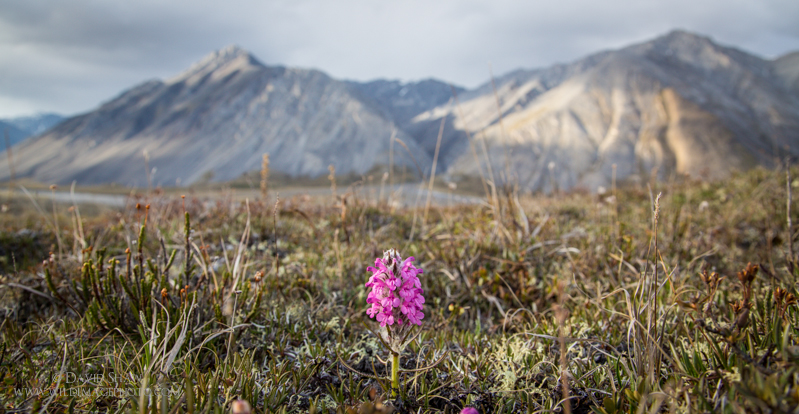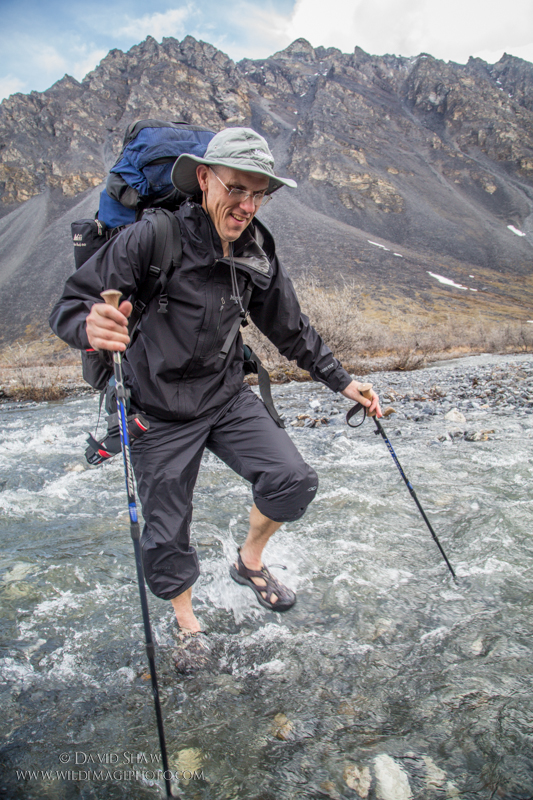Storm over the mountains of the upper Sheenjek Valley
I just finished my first trip of the season guiding for Arctic Wild, and it was a great way to start the summer. Like many early season trips the days leading up to this one involved a lot of preparation and a little bit of panic. It’s a been a late spring up in the Brooks Range and arctic coastal plain and the snow has been slow to come off the high country. That was the origin of the panic. Our original route was to take us from the north slope in the headwaters of the HulaHula south over the continental divide and finish the journey in the headwaters of the Chandalar. Due to snow and unseasonable cold we decided to abandon that plan for a trip that would keep us on the south side of the divide and, hopefully, in the warmer air of the interior. Some time pouring over topo maps, and a new route was found from the headwaters of the Chandalar River across the mountains and into the main fork of the Sheenjek. It was a new route for Arctic Wild and we knew nothing about it. I love not knowing. Really.

Wooly Lousewort on the tundra
We started off in rain, lots and lots of rain. Two and half solid days of the stuff. It wasn’t that bad, really. It stopped often enough to let us dry out a bit, but never for very long. As we walked, the landscape and habitats shifted. We passed through alpine tundra, the snow fresh melted, not a lick of green in the willows. We bashed through willows, still heavy with catkins. We camped on a steep hillside, with just enough flat spaces for a few tents, as a creek, swollen with runoff and rain boomed beneath us. And still the rain came. Until, one evening as a couple of scrambled up to a nearby saddle, it didn’t.
I could feel the change in the air. Like someone clicked on the air conditioning, the temperature dropped 5 or 10 degrees in a matter of moments, and the air dried out. Patches of blue overwhelmed the clouds and the sun reappeared, like a long-absent friend.

Walt, one of my four awesome clients crosses a stream.
Not a drop of rain fell overnight and the creek, formerly roaring, was reduced by half. In the morning, we crossed it easily and headed up the long valley from the willow-choked lowlands into the short alpine tundra. It was a stunning day, cool and crisp. Atop the pass a squall moved through, blowing some pelletized snow. We ate lunch on the lee side before the chill weather drove us down into the next valley.
This was the part I was nervous about. From the topo maps I could see that the valley walls were steep, but in person, I could see that they too, were covered not in tundra but talus and scree. The creek bed was the only place to walk. The newly dry weather eased our passage and the creek never grew more than a few yards across and shin-deep. We crossed it often as we worked our way down the long straight valley. The sun and clouds alternated, cool breezes came with the clouds and warm temps with the sun. Hats on hats off.

The sun appears over the Sheenjek
That night we camped at the confluence of three creeks on a soft tundra bench, in a wide, arctic-like valley. The next day we hiked on, entering the main valley of the Sheenjek, the valley more than two miles across. The arctic feel of the tributary gave way to more vegetation and even the distant appearance of a stand of spruces. We made our final camp a 1/2 mile south of the tundra and rock “airstrip” next to the first trees we’d seen in over a week.
I find it interesting that many guides avoid backpacking. For me there is a sense of comfort in the weight of the pack. Everything I need, packed in there, secure and ready. Freedom wrapped in Cordura fabric.
A week from today, I head out again. I’m already looking forward to it.

